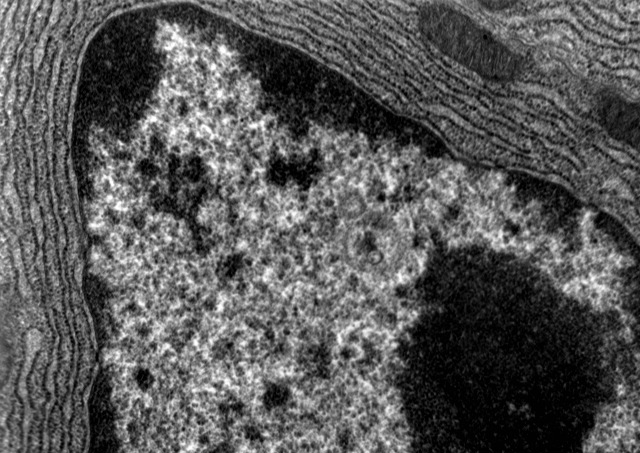
Nuclear receptors are molecular machines that generically recognize and recruit a specific ligand and bind to a specific DNA sequence.
Both actions are related: the recruitment of the ligand contributes to changing the structure of the receptor. This change in structure produces different effects: the receptor can get rid of other proteins to which it was bound, bind to new proteins, recognize their DNA sequence, etc.
Although it is quite canonical, this definition perfectly describes nuclear receptors with known ligands, which, among humans, represent half of the members of the family. The rest of nuclear receptors remain orphan, with no known ligand.
[clear]
 An analogy describing the ligand as a key is often used. This key fits perfectly into the ligand-binding domain, which, in its turn, acts like a lock. However, this is a somewhat inaccurate analogy. The ligand does fit into its “lock”, but it doesn’t “turn”, nor does it open anything. The bond with the ligand triggers structural changes: the receptor changes its physical shape, allowing it to reorganize the interactions it can establish with other molecules.
An analogy describing the ligand as a key is often used. This key fits perfectly into the ligand-binding domain, which, in its turn, acts like a lock. However, this is a somewhat inaccurate analogy. The ligand does fit into its “lock”, but it doesn’t “turn”, nor does it open anything. The bond with the ligand triggers structural changes: the receptor changes its physical shape, allowing it to reorganize the interactions it can establish with other molecules.
[clear]
[clear]
Water Phobia

The ligands identified to date have some common traits: they are small (much smaller than most proteins) and hydrophobic molecules (they are water repellent). In other words, they are lipophilic: they are comfortable in fatty and oily environments.
Cell membranes and organelle membranes: they are mainly made up of lipids. This composition is an effective barrier against water and the molecules which dissolve in it (hydrophilic).
If the cell recognizes some of these hydrophilic molecules, it must have receptors outside the cell, since the molecules cannot go through the cell wall by themselves.
[clear]

Lipophilic molecules, like nuclear receptor ligands, can easily cross these barriers. Thus, their receptors can be located within the cell.
And which ligands are these, more specifically? They include retinoids, fatty acids, cholesterol, lipophilic hormones, some vitamins, etc. But also compounds that are not secreted by the organism, such as some antibiotics, xenobiotics, drugs and environmental molecules.
Among these compounds, we must highlight the possible effects of endocrine disruptors, which are environmental molecules that can alter the normal function of nuclear receptors when entering the body in sufficient concentration.
In-depth Study of the Change
The study of the structure of nuclear receptors has produced impressively accurate results.
Thus, for example, it has been confirmed that ligand binding to the glucocorticoid receptor produces a specific change in the AF-2 helix, stabilizing it in its active conformation. In some cases, the C-terminal part of this AF-2 helix forms a groove with electric charges that allows the recruitment of coactivator proteins.
If the human body were the size of the Earth, nuclear receptors would be the size of smartphones or wrist watches. Current techniques allow us to study the arrangement of the atoms in these molecular machines. In this comparison, it is the equivalent of studying the smallest springs in the wrist watch or elements thinner than the smartphone’s SIM card from an orbiting satellite.
[/one_half]
[/one_half]
Images: LuscoFusco, Scott Hilliard, Asako, NASA Goddard, Dartmouth
[one_half first]
[icon style=”default” size=”20″]fa-chevron-left[/icon] Syntax Analysis
[/one_half]
[one_half]
All that Activates Is Not a Ligand [icon style=”default” size=”20″]fa-chevron-right[/icon]
[/one_half]


